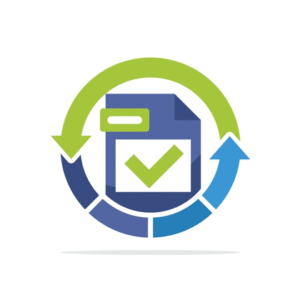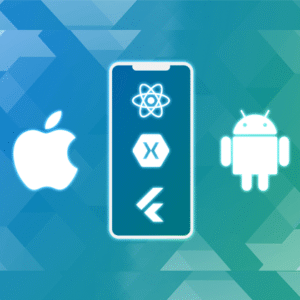$100.00
AI-powered legacy system modernization is no longer optional—it’s essential for organizations seeking agility, security, and future-ready performance. By strategically applying AI technologies, businesses can extend the life of their existing systems while unlocking new value from their data and processes.
Reviews
| 5 star | 0% | |
| 4 star | 0% | |
| 3 star | 0% | |
| 2 star | 0% | |
| 1 star | 0% |
Sorry, no reviews match your current selections
Portfolio & Awards
Lorem Ipsum has been the industry’s standard dummy text ever since the 1500s, when an unknown printer took a galley of type and scrambled it to make a type specimen book. It has survived not only five centuries, but also the leap into electronic typesetting, remaining essentially unchanged. It was popularised in the 1960s with the release of Letraset sheets containing Lorem Ipsum passages, and more recently with desktop publishing software like Aldus PageMaker including versions of Lorem Ipsum.
Pricing Table
| Features |
Small $9,500 / total Initial Business Idea Analysis and Documentation |
Medium $20,000 / total Solution Analysis Vision & Scope |
Large $35,000 /total Solution Analysis Vision & Scope (large-scale) |
|---|---|---|---|
|
Discovery Timeline |
up to 3 weeks |
from 4 to 7 weeks |
from 6 to 9 weeks |
|
Define Business goals and objectives of the expected product |
|
|
|
|
Requirements Elisitation Sessions (stakeholders interviews, workshops) |
up to 5 workshops |
up to 7 workshops |
up to 9 workshops |
|
Requirements Modeling and Documentation |
|
|
|
|
Quality Attributes Workshop |
– |
|
|
|
Business Requirements Specification |
|
|
|
|
Competitor Analysis |
– |
|
|
|
Product Succcess Metrics |
– |
– |
|
|
Functional Decomposition |
|
|
|
|
Key Business Processes & Sequence Diagrams |
– |
|
|
|
Non-Functional requirements analysis and documentation |
– |
|
|
|
Software Architecture Vision and High-level Design |
|
|
|
|
Entity Relationship Diagram |
– |
|
|
|
Technology Stack |
|
|
|
|
Technical Risks Identification |
– |
|
|
|
Architecture decisions report |
– |
– |
|
|
Wireframes |
up to 3 core user flows |
up to 10 core user flows |
up to 15 core user flows |
|
Product Information Architecture |
|
|
|
|
Business Model Canvas |
|
|
|
|
Customer Journey Map |
– |
|
|
|
Value Proposition design Workshop |
– |
– |
|
|
Delivery Time |
– |
– |
– |
Description
Many organizations still rely on legacy systems—outdated software or hardware platforms that are critical to operations but are difficult to maintain, integrate, or scale. AI-powered modernization offers a transformative way to upgrade these systems without complete reengineering, enabling businesses to enhance performance, reduce technical debt, and embrace digital innovation.
🔍 What is Legacy System Modernization?
Legacy system modernization refers to the process of transforming or upgrading outdated IT systems to make them more efficient, scalable, and compatible with modern technologies and business processes. This can involve refactoring code, replatforming, or full system replacement.
💡 Why Use AI for Modernization?
- Automated Code Refactoring: AI can analyze and optimize legacy code structures for better maintainability.
- Data Migration: AI speeds up and secures the migration of data from legacy databases to cloud-based solutions.
- Process Mining: AI tools can map out outdated workflows to identify inefficiencies and suggest improvements.
- Predictive Maintenance: Monitor old systems to predict and prevent failures before they happen.
- Natural Language Interfaces: AI-powered chatbots and voice assistants modernize user interaction without changing the core system.
🧠 Key AI Technologies Involved
- Machine Learning (ML): Detect patterns in legacy data and automate decision-making processes.
- Natural Language Processing (NLP): Understand and modernize documentation, requirements, or code comments.
- Computer Vision: Digitize and interpret scanned documents or visual interfaces of legacy systems.
- Robotic Process Automation (RPA): Automate repetitive tasks handled by legacy applications.
🚀 Benefits of AI-Driven Modernization
- ⚡ Faster and more accurate modernization
- 💸 Lower operational and maintenance costs
- 📈 Improved agility and scalability
- 🔒 Enhanced data security and compliance
- 🧩 Better integration with cloud platforms and APIs
🏗️ Modernization Approaches
- Encapsulation: Wrap legacy functionality into APIs using AI for integration.
- Replatforming: Migrate to a modern platform while preserving core logic.
- Refactoring: Use AI to analyze and restructure the existing codebase.
- Rebuilding: Recreate applications from scratch using AI-assisted development tools.
📊 Real-World Use Cases
- 🏥 Healthcare: Migrating legacy EHR systems to cloud-based platforms with AI-enhanced data mapping
- 🏦 Banking: Using AI to modernize COBOL-based systems for digital banking solutions
- 🏛️ Government: AI-powered OCR to digitize decades-old records
- 🚚 Logistics: RPA and AI to improve legacy supply chain management systems
🔐 Challenges to Consider
- Data quality and completeness
- Security during migration
- Skill gaps in legacy and AI technologies
- Cost management and ROI measurement





